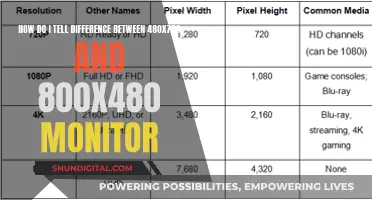
Course Monitoring Tires (CMTs) are used as a control in grading candidate tires. CMTs are designed and built to American Society for Testing and Materials (ASTM) standard E1136 to have particularly narrow limits of variability. The National Highway Traffic Safety Administration (NHTSA) sells CMTs at its UTQG test facility in San Angelo, Texas. The NHTSA furnishes these tires to enable testing for compliance with the Uniform Tire Quality Grading Standards. After you purchase CMTs from the agency, they become your property, and you are free to resell them.
| Characteristics | Values |
|---|---|
| What are course monitoring tires? | Special tires known as "course monitoring tires" (CMT) are used as a control in grading candidate tires. |
| Who sells course monitoring tires? | Course monitoring tires are sold by the NHTSA at its UTQG test facility in San Angelo, Texas. |
| Who manufactures course monitoring tires? | Goodyear Tire and Rubber Company produced all CMT tires from 1975 until 1984. From 1984 to 1991, the CMT tires were produced by Uniroyal. |
| What are course monitoring tires used for? | Course monitoring tires are used to test for compliance with the Uniform Tire Quality Grading Standards. |
| What happens to course monitoring tires after use? | After you purchase course monitoring tires from the NHTSA, they become your property, and you can resell them. |
What You'll Learn
- Course Monitoring Tires (CMTs) are sold by the NHTSA at its UTQG test facility in San Angelo, Texas
- CMTs are used as a control in grading candidate tires
- The NHTSA monitors the changing roughness of the test course
- The NHTSA requires documentation to justify any assignment of a grade on a tire
- The NHTSA has the right to inspect tire manufacturers' data

Course Monitoring Tires (CMTs) are sold by the NHTSA at its UTQG test facility in San Angelo, Texas
Course Monitoring Tires (CMTs) are sold by the National Highway Traffic Safety Administration (NHTSA) at its UTQG test facility in San Angelo, Texas. The NHTSA is a branch of the United States Department of Transportation (DOT).
The UTQG test facility in San Angelo, Texas, is used to test the treadwear of tires. The wear on the tires being tested, known as "candidate tires", is compared to the wear of CMTs. Both types of tires are mounted on vehicles that are driven in a convoy during the test, ensuring that the candidate tires and the CMTs experience the same road conditions. The convoy, typically comprising four or fewer vehicles, will drive 7200 miles on public roads in West Texas.
The CMTs are specially designed and built to American Society for Testing and Materials (ASTM) standard E1136 to have particularly narrow limits of variability. The first CMTs were commercially available Goodyear Custom Steelguards, and the Goodyear Tire and Rubber Company produced all CMT tires from 1975 until 1984. From 1984 to 1991, the CMT tires were produced by Uniroyal.
The NHTSA furnishes these tires to enable companies to test for compliance with the Uniform Tire Quality Grading Standards. After purchasing CMTs from the NHTSA, companies can do what they wish with the tires, including reselling them.
The UTQG was created by the NHTSA in 1978. All passenger car tires manufactured for sale in the United States since March 31, 1979, are federally mandated to have UTQG ratings on their sidewall as part of the DOT approval process.
LCD Monitor: Does Nikon 3500 Have One?
You may want to see also

CMTs are used as a control in grading candidate tires
Course Monitoring Tires (CMTs) are used as a control in grading candidate tires. CMTs are specially designed and built to American Society for Testing and Materials (ASTM) standard E1136 to have particularly narrow limits of variability.
The CMTs are used to establish a base course wear rate (BCWR), which is used to calculate the treadwear grade of candidate tires. The BCWR is calculated by running the CMTs over a 6,400-mile test course and measuring their average wear rate. This wear rate is then compared to the wear rate of the candidate tires, which are being tested for grading purposes.
The use of CMTs as a control ensures consistency in the treadwear ratings by compensating for any changes or variations in CMT characteristics. The National Highway Traffic Safety Administration (NHTSA) measures the wear rate of CMTs four times per year and uses the average of these tests as the basis for the BCWR.
The CMTs used in testing must meet certain requirements. They must be no more than one year old at the start of the test and must be used within two months of being removed from storage. These requirements help minimize degradation and ensure accurate results.
The process of grading candidate tires involves running them over a selected 400-mile segment of public highway outside San Angelo, Texas. After an 800-mile "break-in" run, the candidate tires are driven over the 6,400-mile test course in a convoy with the CMTs. This ensures that both types of tires experience the same road conditions. The wear on the candidate tires is then compared to the wear on the CMTs, and a treadwear grade is assigned accordingly.
The treadwear grade is a comparative rating that indicates the relative wear rate of the tire. A higher treadwear number indicates that the tire should last longer before the tread wears down. For example, a tire with a grade of 200 should, in theory, last twice as long as a tire with a grade of 100.
It is important to note that tire manufacturers are not obligated to grade tires based solely on test results. However, NHTSA requires documentation to justify the assigned grade, and manufacturers cannot overstate the grade.
Hooking Up Multiple Monitors in Your Car: The Ultimate Guide
You may want to see also

The NHTSA monitors the changing roughness of the test course
The National Highway Traffic Safety Administration (NHTSA) is responsible for monitoring the changing roughness of the test course used to assess tire quality. This process involves the use of special tires known as Course Monitoring Tires (CMTs), which are designed and built to precise specifications. The NHTSA conducts regular tests by running these CMTs over a 6,400-mile course in San Angelo, Texas, to establish a baseline for tire performance.
The NHTSA pays close attention to the course's roughness by periodically calculating a Base Course Wear Rate (BCWR). This rate is determined by measuring the wear on CMTs driven over the test route. The agency performs this calculation four times a year, using the average wear rate from the last four quarterly tests as the basis for the BCWR. This process ensures that any changes in the course's roughness are accounted for when grading tires.
The NHTSA's meticulous monitoring of the test course helps maintain the accuracy and consistency of tire grading. By comparing the wear rates of CMTs and candidate tires (those being graded), the agency can compensate for variations in CMT characteristics. This direct comparison results in more reliable treadwear ratings.
To further enhance the accuracy of the grading system, the NHTSA has implemented specific requirements for CMTs used in testing. These CMTs must be no more than one year old at the start of the test and must be utilized within two months of removal from storage. This minimizes the potential impact of tire aging on the test results.
The NHTSA's commitment to monitoring the test course's roughness is a crucial aspect of ensuring the reliability of tire grades. By regularly assessing and adjusting for variations, the agency provides consumers with accurate information about tire performance, contributing to safer driving experiences.
Wireless Monitor Setup for Your Loudbox Mini
You may want to see also

The NHTSA requires documentation to justify any assignment of a grade on a tire
The National Highway Traffic Safety Administration (NHTSA) requires documentation to justify any assignment of a grade on a tire. This is because the NHTSA has the right to inspect tire manufacturers' data and can fine them if inconsistencies are found. The Uniform Tire Quality Grading (UTQG) is a set of standards for passenger car tires that measure a tire's treadwear, temperature resistance, and traction. The UTQG was created by the NHTSA in 1978 and all passenger car tires manufactured for sale in the United States since March 31, 1979, are federally mandated to have UTQG ratings on their sidewall.
The UTQG rating is made up of three components: treadwear, traction, and temperature. The treadwear grade is a comparative rating based on the wear rate of the tire when tested under controlled conditions on a specified government test track. A tire graded 200 would last twice the distance on the government test course under specified test conditions as one graded 100. In theory, this means that a tire with a 200-grade will wear twice the distance as a tire with a 100-grade.
However, tire manufacturers are not obligated to grade a tire based on the test results, except to say that they cannot overstate the grade. This is enforced by the NHTSA requiring documentation to justify any assignment of a grade on a tire. The NHTSA publishes resources such as the "Consumer Guide to Uniform Tire Quality Grading" to provide more information on UTQG ratings.
The wear on tires that are being tested, known as "candidate tires," is compared to the wear of Course Monitoring Tires (CMT). Both types of tires are mounted on vehicles that will be driven in a convoy during the test, ensuring that the candidate tires and the CMT tires experience the same road conditions. The convoy, typically comprising four or fewer vehicles, will drive 7200 miles on public roads in West Texas. Candidate tire wear will be checked during and after the test and compared to the wear on the CMT tires from the same convoy.
The NHTSA furnishes these tires to enable compliance testing with the Uniform Tire Quality Grading Standards. After purchasing CMTs from the agency, they become the property of the purchaser, and there is no prohibition against the resale of the tires after testing is completed.
Ultra-Wide Monitor Sizes: How Wide is Too Wide?
You may want to see also

The NHTSA has the right to inspect tire manufacturers' data
The National Highway Traffic Safety Administration (NHTSA) is a body under the U.S. Department of Transportation that is responsible for issuing Federal Motor Vehicle Safety Standards for new motor vehicles and new motor vehicle equipment. The NHTSA has the authority to inspect tire manufacturers' data as part of its mandate to ensure that all motor vehicles and motor vehicle equipment sold or imported into the United States comply with the safety standards.
The NHTSA routinely tests certified tires that have been sold to determine whether they comply with the applicable standards. If the tires pass the tests, no further steps are taken. However, if the tires fail to meet the standards, the tire manufacturer is required to recall the tires and remedy the non-compliance.
The NHTSA does not do any pre-sale approval or testing of tires. Instead, the onus is on the tire manufacturer to certify that its tires comply with the applicable safety standards. The manufacturer is only required to exercise due care in certifying its tires. It is up to the individual tire manufacturer to determine what test results, computer simulations, engineering analyses, or other information it needs to enable it to certify that its tires comply with the applicable Federal motor vehicle safety standards. Once a manufacturer has determined that its tires meet the requirements of the applicable standard, it certifies that compliance by molding the letters "DOT" on one sidewall of each certified tire.
The NHTSA has established a requirement that all tire manufacturers, both foreign and domestic, must obtain an identification mark from the NHTSA and label each of their tires with that mark. Before the NHTSA will assign an identification mark to a foreign tire manufacturer, the manufacturer must designate a permanent resident of the United States as its agent for service of process in the country. However, the designated agent of the manufacturer is not responsible for the certification of the tires.
In summary, the NHTSA has the right to inspect tire manufacturers' data as part of its mandate to ensure compliance with Federal Motor Vehicle Safety Standards. The NHTSA's inspection of tire manufacturers' data is done through routine tests of certified tires that have been sold, rather than through any pre-sale approval or testing of tires.
Positioning Studio Monitors: How Room Size Impacts Sound
You may want to see also
Frequently asked questions
Course monitoring tires (CMTs) are used as a control in grading candidate tires. CMTs are specially designed and built to American Society for Testing and Materials (ASTM) standard E1136 to have particularly narrow limits of variability.
Course monitoring tires are sold by the National Highway Traffic Safety Administration (NHTSA) at its UTQG test facility in San Angelo, Texas.
Both candidate tires and CMTs are mounted on vehicles that will be driven in a convoy during the test, thus ensuring that the candidate tires and the CMTs experience the same road conditions. The convoy, typically comprising four or fewer vehicles, will drive 7200 miles on public roads in West Texas.
The NHTSA monitors the changing roughness of the test course, periodically calculates a base course wear rate (BCWR), and uses it to adjust the measured wear rates of tires driven over the course.
The NHTSA measures the wear rate of CMTs 4 times per year and uses the average wear rate from the last 4 quarterly CMT tests as a basis for the BCWR.







